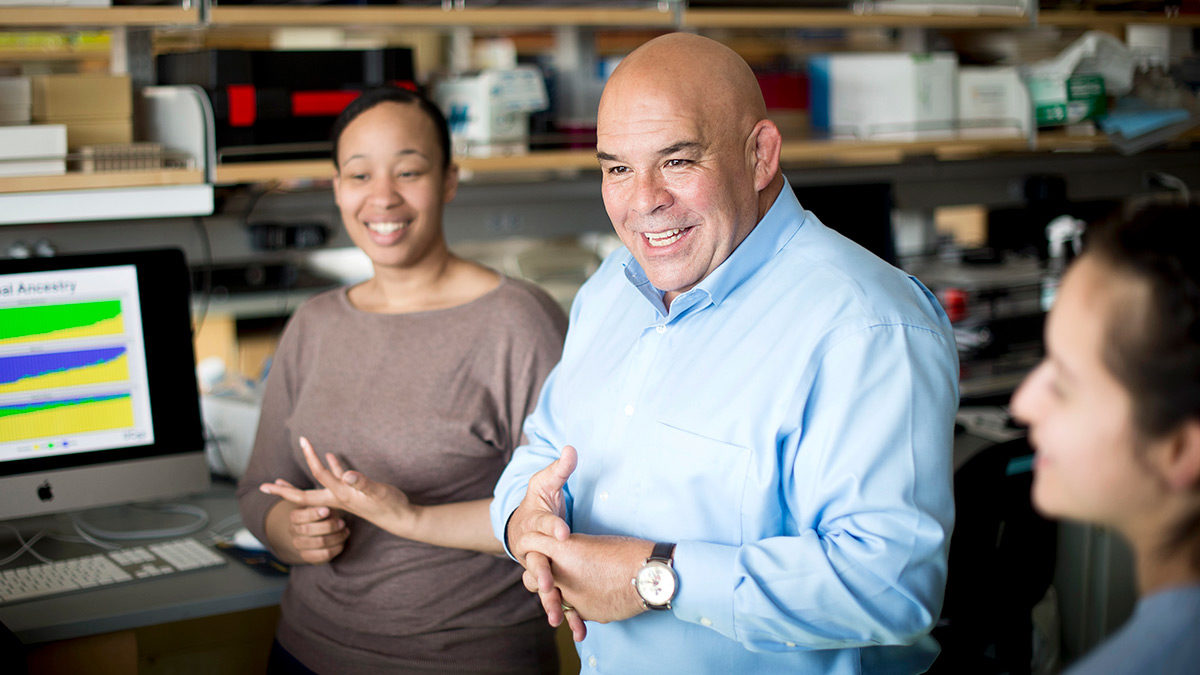By Mónica I. Feliú-Mójer, Nina Griffin and Elliot Kirschner

Esteban Burchard is Latino. He grew up in poverty, raised by a single mother, and has faced discrimination all of his life. He is now a world renowned researcher and tenured professor at the University of California, San Francisco (UCSF). Dr. Burchard’s “underdog story” reads like so many others told about scientists from underrepresented backgrounds. However, these narratives have become stale, are overused and devoid of important context and depth.
Of course, we must acknowledge there is a lot of truth in these underdog stories. We cannot deny that the barriers and oppression faced by people from marginalized groups make their path into science much harder. But, simply put, this overcoming-it-all narrative does a disservice to underrepresented scientists and, more generally, to the scientific endeavor. Viewing them through the underdog lens renders their experiences one dimensional. It negatively impacts the way they are perceived and diminishes the ability of people like them to see themselves as scientists. It also clouds the value of diversity in science and how it shapes scientific breakthroughs.
So when we went to tell Dr. Burchard’s story, we wanted to paint a much broader picture experimenting with a variety of storytelling strategies. How can we rethink the “diversity in science” narrative? Over the past year we at iBiology have been working on a collection of short films—called “Background to Breakthrough”—focused on how the identities, culture, and background of underrepresented scientists fuel their ingenuity and approaches to problem solving. Our inaugural effort profiles Dr. Burchard and his research on the genetic and environmental factors of asthma health disparities. In a trio of videos (ranging in length from roughly 4 to 7 minutes), we explore Dr. Burchard’s contributions to science, the role of race in medicine, and how his own ethnic and cultural background has contributed to his successful career.
The films focus sharply on Dr. Burchard, not only as a researcher, but a mentor, and an activist. Using storytelling strategies like speaking directly to viewers, using visual analogies, citing concrete examples, and reframing the underdog tale, the series shows how diversity enriches scientific research. How, to benefit people of all backgrounds, science truly needs to include everyone.
Speaking directly to viewers: When Burchard reveals that the asthma drug Serevent significantly increases the risk of death in African Americans, he breaks the fourth wall and directly asks the viewer: “If you were a parent, would you let your child use this?” By doing this, he invites the audience to tap into a universal human desire (wanting the best medical care for a loved one) and challenges them to reflect on the shortcomings of a healthcare system that has consistently discriminated against racial minorities.
Using visual analogies: Burchard describes race as a “shopping cart that contains lots of information that is relevant for clinical and biomedical research”. Through animation, we expand on this analogy to provide a unique framework to understand the relationship between race and biology. The animation also gives insight into how deeply Burchard thinks about the complexities of race and the creativity he employs to explain them in a compelling and accurate way.
Citing concrete examples: While there is a wealth of research demonstrating that diverse groups are better at problem solving than non-diverse groups, concrete examples of how this is true in science are rarely depicted. Burchard shares how his understanding of Latino culture helped him make sense of an important research finding that his white counterparts had been struggling to understand.
Reframing the “underdog” tale: Rather than defining Burchard as an underdog who rose to the top, we asked: how did he overcome the challenges he faced? We interviewed Burchard for hours and dug through hundreds of old photographs, to tell a more nuanced story and, for example, identify the multiple mentors that gave him the confidence, support, and guidance to succeed.
We see “Background to Breakthrough” as a series of science communication experiments. Will these stories change perceptions of who belongs to science, who science belongs to, and the paths to a scientific career? We are testing our approach by carefully evaluating the effectiveness of our storytelling strategies and how we distribute the films for maximum impact. We certainly hope that this project inspires viewers to rethink, in a more critical way, the narratives they hear about underrepresented scientists. Are these stories doing the scientists justice? What is missing? Who is missing? We hope that by challenging biases and conventional assumptions, “Background to Breakthrough” can help change the narratives of diversity in science.
This post originally appeared on Scientific American on May 7, 2018.
Any opinion, finding, conclusion, or recommendation expressed in this article and the “Background to Breakthrough” videos are solely those of the speaker and do not necessarily represent the views of iBiology, the National Science Foundation, the National Institutes of Health, or other iBiology funders.
The authors are the producers of “Background to Breakthrough”. They are part of iBiology, a non-profit organization that produces and distributes free online videos about research, the process of science, and professional development.





Leave a Reply